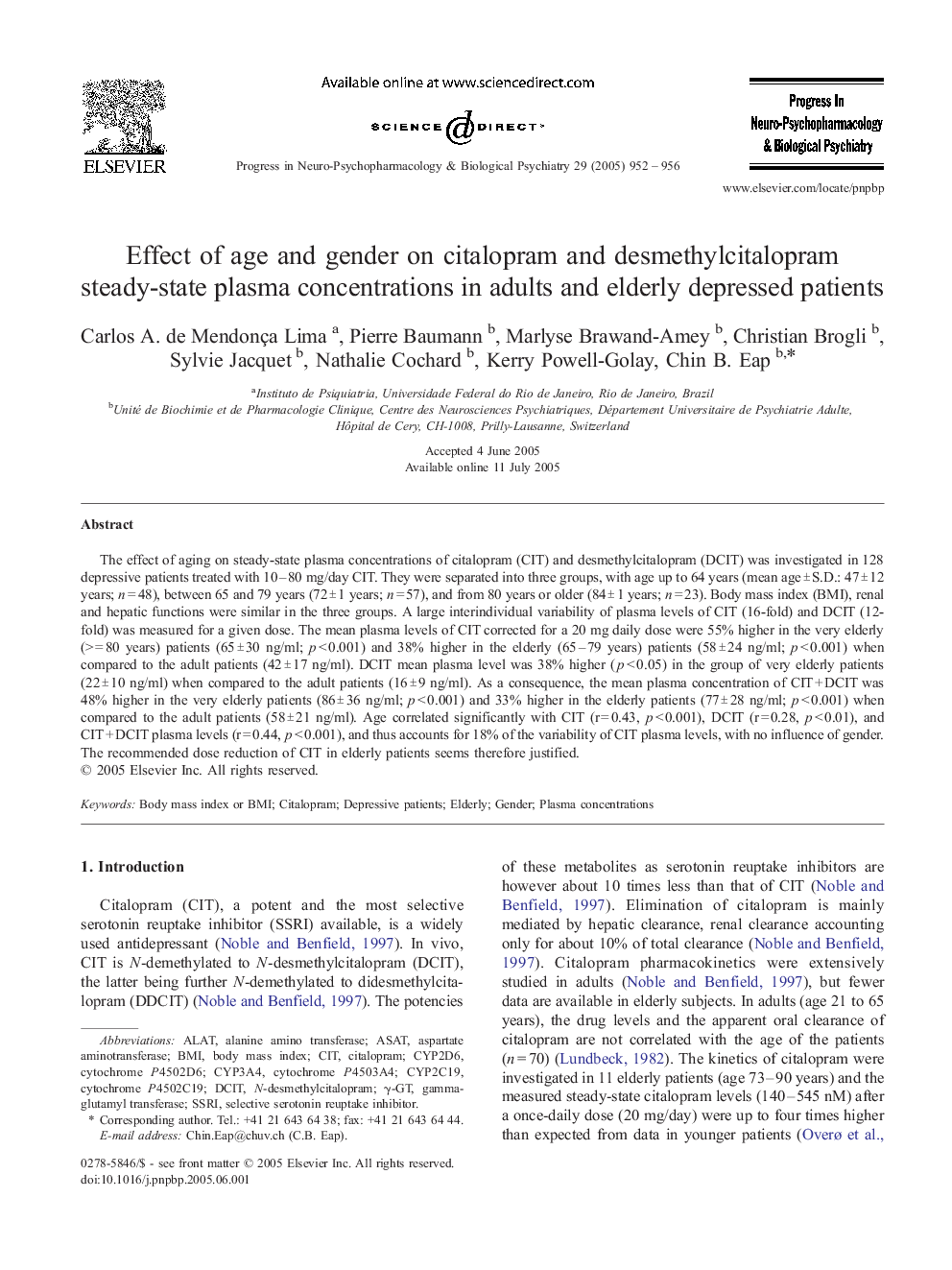| Article ID | Journal | Published Year | Pages | File Type |
|---|---|---|---|---|
| 9016290 | Progress in Neuro-Psychopharmacology and Biological Psychiatry | 2005 | 5 Pages |
Abstract
The effect of aging on steady-state plasma concentrations of citalopram (CIT) and desmethylcitalopram (DCIT) was investigated in 128 depressive patients treated with 10-80 mg/day CIT. They were separated into three groups, with age up to 64 years (mean age ± S.D.: 47 ± 12 years; n = 48), between 65 and 79 years (72 ± 1 years; n = 57), and from 80 years or older (84 ± 1 years; n = 23). Body mass index (BMI), renal and hepatic functions were similar in the three groups. A large interindividual variability of plasma levels of CIT (16-fold) and DCIT (12-fold) was measured for a given dose. The mean plasma levels of CIT corrected for a 20 mg daily dose were 55% higher in the very elderly (> = 80 years) patients (65 ± 30 ng/ml; p < 0.001) and 38% higher in the elderly (65-79 years) patients (58 ± 24 ng/ml; p < 0.001) when compared to the adult patients (42 ± 17 ng/ml). DCIT mean plasma level was 38% higher (p < 0.05) in the group of very elderly patients (22 ± 10 ng/ml) when compared to the adult patients (16 ± 9 ng/ml). As a consequence, the mean plasma concentration of CIT + DCIT was 48% higher in the very elderly patients (86 ± 36 ng/ml; p < 0.001) and 33% higher in the elderly patients (77 ± 28 ng/ml; p < 0.001) when compared to the adult patients (58 ± 21 ng/ml). Age correlated significantly with CIT (r = 0.43, p < 0.001), DCIT (r = 0.28, p < 0.01), and CIT + DCIT plasma levels (r = 0.44, p < 0.001), and thus accounts for 18% of the variability of CIT plasma levels, with no influence of gender. The recommended dose reduction of CIT in elderly patients seems therefore justified.
Keywords
Related Topics
Life Sciences
Neuroscience
Biological Psychiatry
Authors
Carlos A. de Mendonça Lima, Pierre Baumann, Marlyse Brawand-Amey, Christian Brogli, Sylvie Jacquet, Nathalie Cochard, Kerry Powell-Golay, Chin B. Eap,
